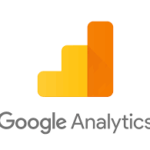How to Make Your Marketing Data Actionable
Working at a marketing agency, I spend most of my time presenting and ultimately implementing strategic recommendations to clients to improve their lead and demand generation efforts. Just as there is not a one-size fits all marketing strategy, there is also not a single formula for effectively analyzing all of the data that we, as marketers, collect to guide our tactics. However, there are tactics to follow that will make your marketing data actionable.
So, how do you interpret all of your marketing KPIs and use them to tell a story that will clearly articulate results? Moreover, how do you use the unified language of data to share your campaign analysis with other key stakeholders?
I rely on four key elements for success: Goals, Audience, Tools, and Reporting.
Goals
OK, this isn’t technically a marketing analysis tactic, but it’s an essential element for executing successful marketing campaigns that tell the right story. Before you begin any marketing campaign, goals need to be set. And not just any goals – SMART goals. Goals are such a critical element of the storytelling process that there is a methodology for how to set them: creating SMART goals. Use it.
Setting the goals is just the first step. They need to be referenced and utilized to drive the execution of the campaign all the way from plan inception through final analysis. At the start of the campaign, develop a campaign strategy that documents your specific, measurable goals. For example, if you are planning a webinar campaign, your goal could be for 50 registrations; for an ebook it might be 25 net new leads in the first 60 days post launch; or for a PPC campaign it might be keeping your cost per conversion under $100.
Understanding your goals informs the execution process and makes future measurement possible. My campaign strategy documents always include a “Results” section where I record both quantitative and qualitative analysis at the conclusion of a campaign. Bonus tip: This serves as a handy reference you can turn to to prepare retrospectives on performance for board meetings or other events where replaying a list of greatest hits would be beneficial.
Audience
One of the best ways to interpret marketing data is to view metrics through the eyes of your key stakeholders. If you report marketing results to C-suite execs, they are likely interested in understanding what bottomline results your marketing tactics are driving, not just vanity metrics. If you are reporting to a Business Development Representative, they will likely judge the success of your campaign by how many MQLs it drove. Conversely, if you are reporting to a Brand Manager, they might be concerned with how much traffic or how many impressions you generated.
Knowing who you are reporting to is critical to telling the right story, not just any story. It’s important to also consider what they value and what challenges they face to influence the way you tell your story.
- If they’re Creative, use visuals.
- If they’re Salesy, monetize results.
- If they’re Execs, avoid the deep dive.
Tools
Marketers have lots of tools. To achieve savvy campaign analysis, you need to know which of those tools can be utilized to pull the KPIs you need to to successfully craft your story.
Funny thing: with the myriad of tools to choose from, you will undoubtedly encounter instances where the metrics differ from tool to tool. Faced with differences in data, I recommend picking your preferred platform and using it as the source of truth. For example, HubSpot is great at providing comprehensive context to your marketing efforts. Salesforce specializes in monetizing activity. Hootsuite brings all of your social analytics together for easier analysis.
Here are some of our favorite tools for measuring all aspects of digital marketing from paid search to marketing automation.
PPC platforms like Google Adwords gives you an opportunity to view data at both the micro and macro level. KPIs such as Click Through Rate (CTR), Cost per Acquisition (CPA) and conversion metrics, like net new leads, are all available to you. With access to such a vast array of data, it’s important to remain aligned with the metrics your client values most.
Using SEO tools like MOZ or Ahrefs can help you validate that your content is relevant and organically reaching your audience. I like to base my observations on competitive metrics – these platforms make that analysis drop dead simple. Unless you’re a marketing geek like me, knowing your site’s Domain Authority isn’t nearly as important as knowing that you’re outranking your competitor and filling the sales pipeline, which is, of course, our goal as marketers.
Overall site traffic numbers (sessions, referrals, and channel performance) all act as a barometer for overall program health, and help pave the way to understanding patterns in your marketing performance. For example, using Google Analytics to review these metrics will help you to better understand your audience and improve your marketing strategy. For example, you can use these insights to determine the channels you should be spending your ad budget.
Marketing Automation platforms like HubSpot can often provide quick insights on campaign performance for all of your inbound marketing activities. HubSpot is arguably a swiss-army knife when it comes to marketing, providing one-stop-shop for your reporting needs. Among its manyout-of-the box functions, you’ll find dashboards and reports for reviewing top performing content, referring sources, and channels. Pro-tip: you’re not limited to the pre-built functionality. If you want to customize reports or have them delivered daily to your inbox, that’s easy too.
Reporting
Data is cool (ok, I’m a nerd), but if you can’t make it actionable, why bother? The biggest contribution a marketing analyst can provide is insights. You know you have won with a client if you can effectively connect the dots between marketing tactics and the KPIs they are using to measure marketing success.
When I’m collecting data from the tools I use to measure progress against goals for specific tactics, I try to give my audience context by showing trends, current impact of marketing efforts, or future opportunities for improvement.
Take your analysis to the next level by leveraging visual reporting tools. Whether that’s building graphs and charts in Excel or using softwares like Data Studio, Bizable or Tableau, it will help make the story you are trying to tell more accessible and digestible.
Every campaign can teach you something. While using a portion of your budget for experimental, growth-oriented tactics is a topic unto itself, (and beyond the scope of this discussion) these outside-the-box campaigns often produce unexpected, and sometimes even undesired, results. But even an underperforming campaign can provide long-term value if you can draw insights that guide future efforts.
Developing data storytelling skills isn’t easy, but it is a necessary component and best practice if you are looking to get executive support for new marketing initiatives.
Need help accelerating your marketing efforts? Contact SmartAcre to discuss your challenges and receive our recommendations.









